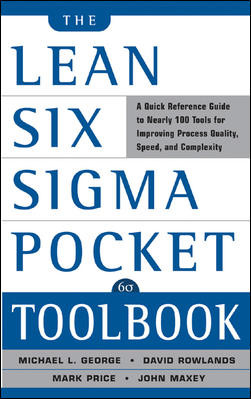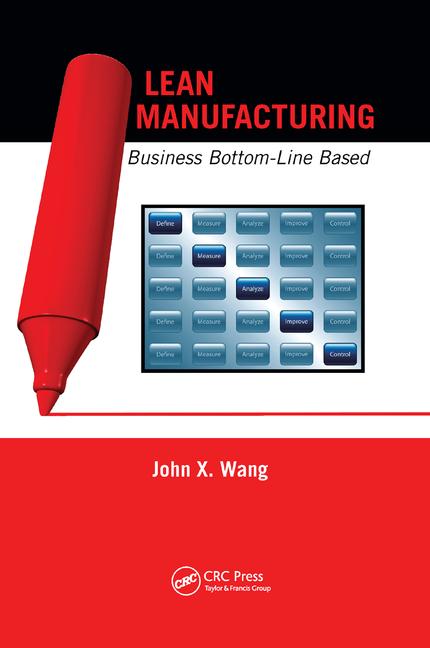Leading Lean: Make Everything Visual
Visual management leads to better decisions by giving people only the information they need and in the form they need it.
Few tools are simpler-and less used-than visual management. Visual management is an approach to managing information, decisions and standardization so that anyone can tell at a glance whether everything is normal or abnormal and what should be done next. We are surrounded by good examples of this approach, yet much of the decision-making and assessment within our own organizations is left to experience, tribal knowledge and chance.
Consider your drive home from work each day. Would you rather have a spreadsheet showing the location and speed of every car, or know when the driver in front of you applies the brakes? Not only is the latter more effective, it’s also a great example of a visual management system. You need to decide when to slow down, so you need to know when the person in front of you slows. That information comes packaged as a bright red light right in front of you.
Information flow often starts by reviewing the available information, and then devising new and useful ways to dispense that information. Instead, we should start by asking three questions about what the people using that information need. First, what decisions do they need to make? Second, what information do they need to make that decision? Third, how must it be packaged? This requires that you think about where these people might be, and what they might be doing, so they can be informed that the information is available to them.
It’s important to understand that there are different levels of visual management. In particular, there is a distinction between visual information and visual control. Consider, for example, a railroad grade crossing. A sign that reads “railroad crossing” provides visual information. You, the driver, are advised to be careful but it is still up to you to do the right thing. You can get a little more structured by adding more visual information-a bell and a light-to the railroad crossing sign. These tell you that a train is approaching the crossing, but you can still make a bad decision. You get visual control when you add the gate to the railroad crossing. This changes the behavior from failing to make the right decision, to deliberately making a very bad-often fatal-decision.
Visual control is the ultimate form of standardization. Visual controls or devices enable any individual to recognize the standard and any deviation from that standard. Visual information and visual control are important because most jobs are designed such that people have to make far too many decisions. Imagine if, every day, you had to decide when to fit brushing your teeth into your daily routine, what materials and tools to select, what sequence of steps to follow, what method to use and how long to brush. That’s a lot of decisions, but we’ve all learned to remove them-and the attendant need for information-from our daily routine.
The analog in manufacturing is straightforward. Instead of giving people every piece of available information, give them just what they need and in the form that they need it for making the decisions their jobs require. This is a step towards unleashing wasted brainpower better used for making improvements.
Start by observing one front-line position or supervisor in your organization for a day. Note how many decisions that person makes and what information that person goes through to make those decisions. Get answers to the three questions stated above. You don’t need perfect answers; you just need to get started. This exercise will give you valuable insights into the potential benefits from using visual management effectively. Pick one decision point, make it visual, and you’ve just begun your journey to a more effective organization.
Jamie Flinchbaugh is a founder and partner of the Lean Learning Center in Novi, MI, and the co-author of The Hitchhiker’s Guide to Lean: Lessons from the Road. He shares his successful and varied experiences of lean transformation as a practitioner and leader through companies such as Chrysler and DTE Energy. He also has a wide range of practical experience in industrial operations, including production, maintenance, material control, product development and manufacturing engineering. Jamie is a graduate fellow of the Leaders for Manufacturing Program at the Massachusetts Institute of Technology, where his research thesis was on implementing lean manufacturing through factory design. He also holds a B.S. in Engineering from Lehigh University in Bethlehem, PA, and an M.S. in Engineering from the University of Michigan. To contact Jamie directly, go to the web site www.leanlearningcenter.com.
Few tools are simpler-and less used-than visual management. Visual management is an approach to managing information, decisions and standardization so that anyone can tell at a glance whether everything is normal or abnormal and what should be done next. We are surrounded by good examples of this approach, yet much of the decision-making and assessment within our own organizations is left to experience, tribal knowledge and chance.
Consider your drive home from work each day. Would you rather have a spreadsheet showing the location and speed of every car, or know when the driver in front of you applies the brakes? Not only is the latter more effective, it’s also a great example of a visual management system. You need to decide when to slow down, so you need to know when the person in front of you slows. That information comes packaged as a bright red light right in front of you.
Information flow often starts by reviewing the available information, and then devising new and useful ways to dispense that information. Instead, we should start by asking three questions about what the people using that information need. First, what decisions do they need to make? Second, what information do they need to make that decision? Third, how must it be packaged? This requires that you think about where these people might be, and what they might be doing, so they can be informed that the information is available to them.
It’s important to understand that there are different levels of visual management. In particular, there is a distinction between visual information and visual control. Consider, for example, a railroad grade crossing. A sign that reads “railroad crossing” provides visual information. You, the driver, are advised to be careful but it is still up to you to do the right thing. You can get a little more structured by adding more visual information-a bell and a light-to the railroad crossing sign. These tell you that a train is approaching the crossing, but you can still make a bad decision. You get visual control when you add the gate to the railroad crossing. This changes the behavior from failing to make the right decision, to deliberately making a very bad-often fatal-decision.
Visual control is the ultimate form of standardization. Visual controls or devices enable any individual to recognize the standard and any deviation from that standard. Visual information and visual control are important because most jobs are designed such that people have to make far too many decisions. Imagine if, every day, you had to decide when to fit brushing your teeth into your daily routine, what materials and tools to select, what sequence of steps to follow, what method to use and how long to brush. That’s a lot of decisions, but we’ve all learned to remove them-and the attendant need for information-from our daily routine.
The analog in manufacturing is straightforward. Instead of giving people every piece of available information, give them just what they need and in the form that they need it for making the decisions their jobs require. This is a step towards unleashing wasted brainpower better used for making improvements.
Start by observing one front-line position or supervisor in your organization for a day. Note how many decisions that person makes and what information that person goes through to make those decisions. Get answers to the three questions stated above. You don’t need perfect answers; you just need to get started. This exercise will give you valuable insights into the potential benefits from using visual management effectively. Pick one decision point, make it visual, and you’ve just begun your journey to a more effective organization.
Jamie Flinchbaugh is a founder and partner of the Lean Learning Center in Novi, MI, and the co-author of The Hitchhiker’s Guide to Lean: Lessons from the Road. He shares his successful and varied experiences of lean transformation as a practitioner and leader through companies such as Chrysler and DTE Energy. He also has a wide range of practical experience in industrial operations, including production, maintenance, material control, product development and manufacturing engineering. Jamie is a graduate fellow of the Leaders for Manufacturing Program at the Massachusetts Institute of Technology, where his research thesis was on implementing lean manufacturing through factory design. He also holds a B.S. in Engineering from Lehigh University in Bethlehem, PA, and an M.S. in Engineering from the University of Michigan. To contact Jamie directly, go to the web site www.leanlearningcenter.com.
Looking for a reprint of this article?
From high-res PDFs to custom plaques, order your copy today!





